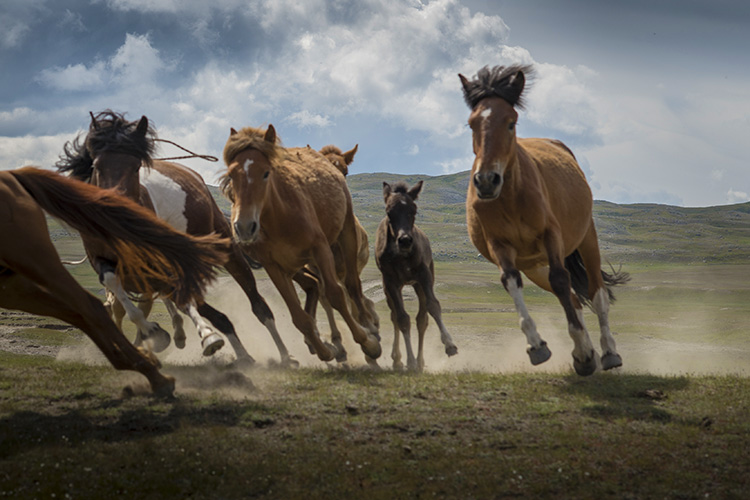
The Kazakh ethnic group makes up around 90% of the population of Mongolia's Bayan-Olgi province, with around 100,000 Kazakhs spread thinly across the wilderness. Kazakh culture is distinct here: the nomads are Muslim and they speak Kazakh in everyday life, using Mongolian only when they need to communicate with other tribes or groups. They can trace their roots back to the 15th century and to Chinngis Khaan. They settled in this region of the Altai Mountains in the 18th century after fleeing the Russian Empire.
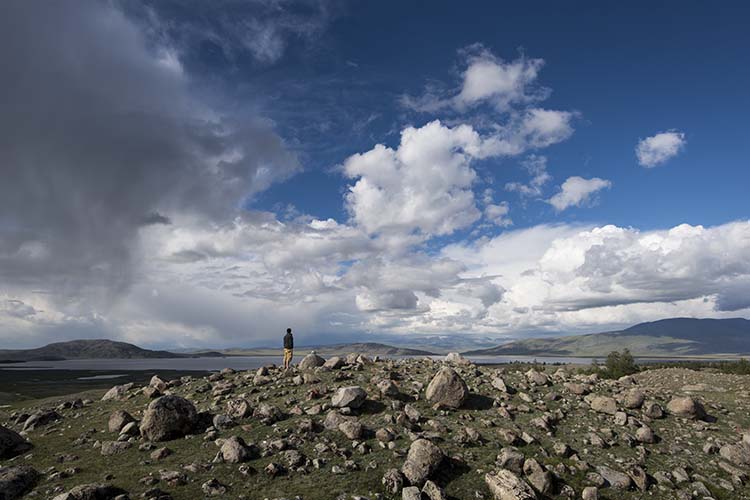
The nomads live in the empty and remote mountainous terrain of the Upper Dayan Valley, which spreads out near the border with China.
Today, the Kazakhs maintain their traditional lifestyle, typically moving their animals three or four times a year to find new grazing pastures. Living in Kazakh-style gers (bigger and taller than a Mongolian tent) they must maximise the summer grazing period to ensure they and their livestock can survive the brutal Mongolian winters, where temperatures regularly fall to -40°C.
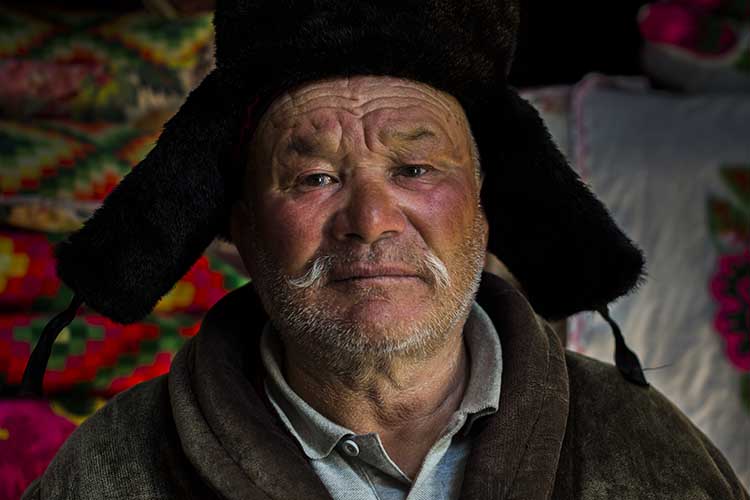
Tavay is the group's 63-year-old patriarch and leader. His people pride themselves on being incredibly noble and hospitable. They happily welcome strangers into their gers for a meal or fermented mare’s milk.
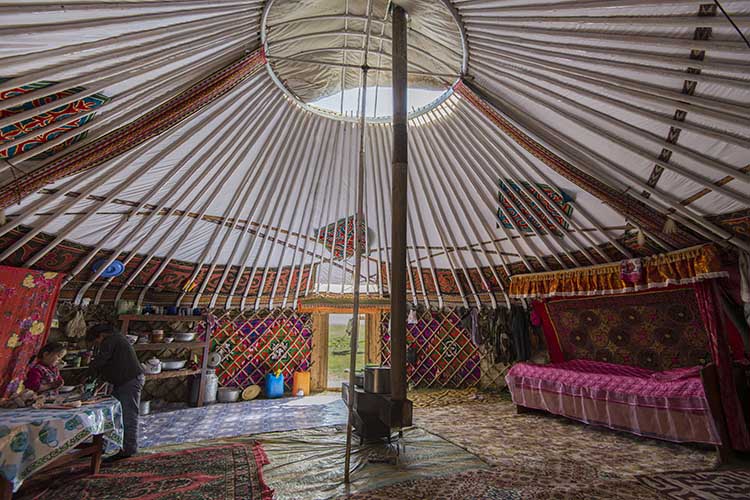
Every Kazakh nomad's ger has a vented section in the roof and a central wood- or dung-burning stove for cooking and heating. The food preparation area is small (above left), with the family's beds around the remaining walls. Each bed is lined with beautiful handmade rugs.
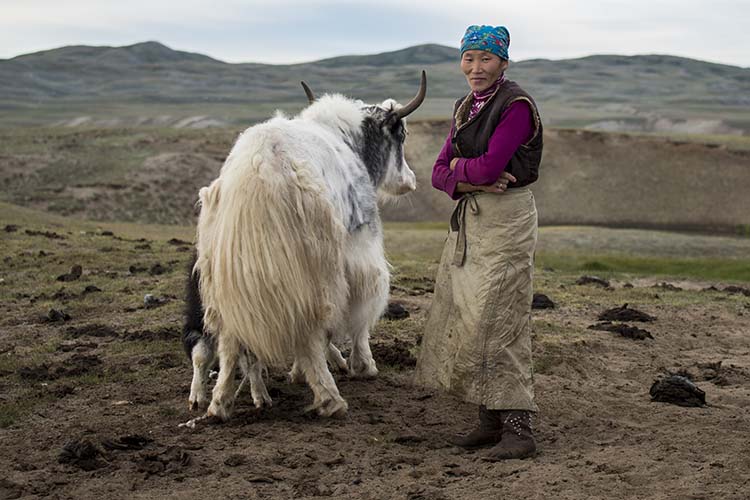
For the Kazakh women of the Upper Dayan Valley, daily life includes feeding and caring for their herds, which usually consist of yaks, goats and horses, all of which contribute essentials like milk.
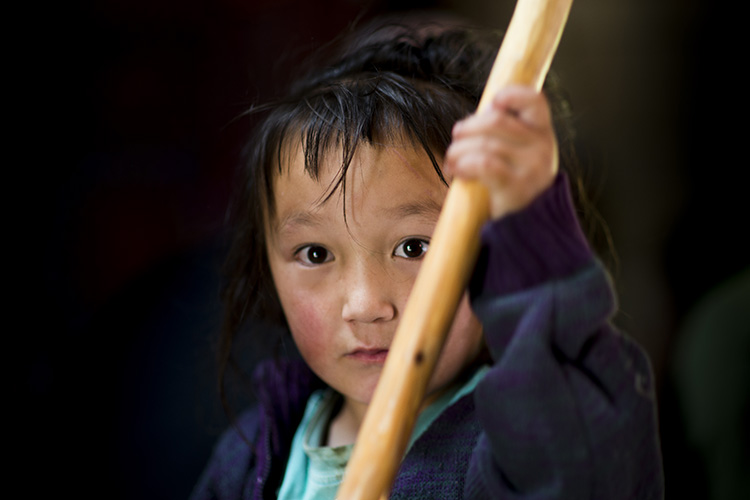
All members of the family are expected to help with the main chores that ensure the Kazakh's traditional way of life can function. For girls, this often includes churning horse milk, which will later be made into fermented mare’s milk, a staple part of the Kazakh diet.
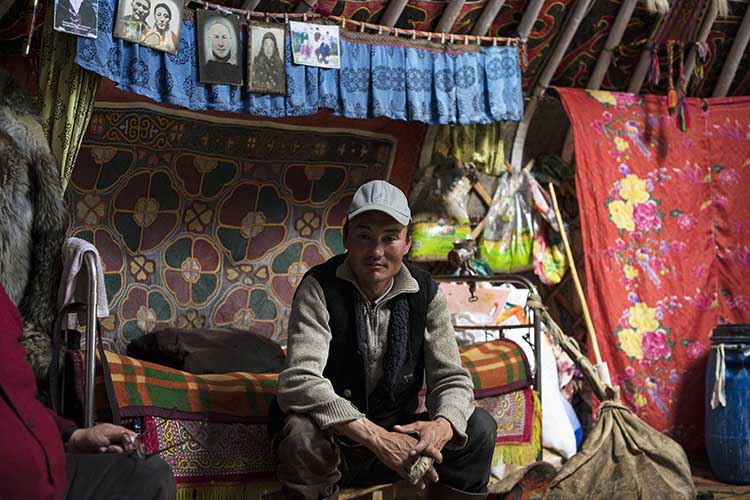
Typically, families live together inside a single ger. These tents hold all the items important for a nomad's daily life: a churn used to make fermented mare’s milk, old family portraits, a meat mincer and metal bed frames. Clothing and rugs are often made of wild skins, such as wolf fur or yak hair.
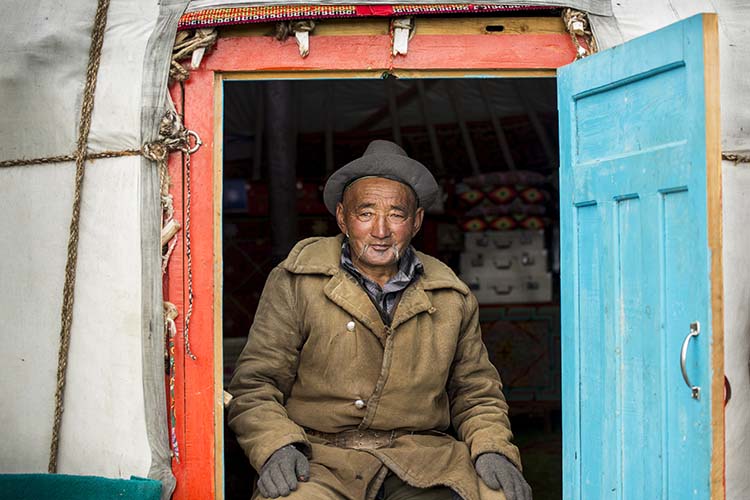
Mongolian Kazakhs are incredibly welcoming people. On our visit, we were offered countless cups of tea or milk, as well as traditional food, like dried cheese, goat meat, mutton or beshbarmak, a traditional dish of meat and noodles that translates as 'five fingers', as it is eaten with the hands.
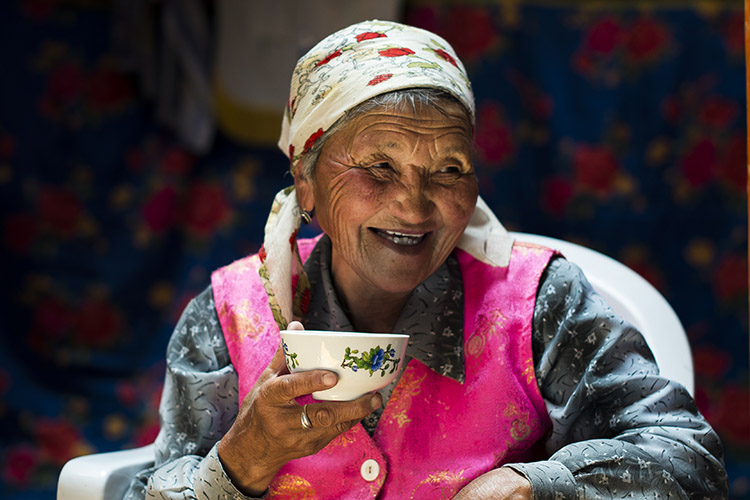
It is considered most polite to greet guests first with of a bowl of alcoholic fermented mare’s milk, followed by air-dried cheese and homemade pastries, all of which are cooked in the simple ger kitchen.
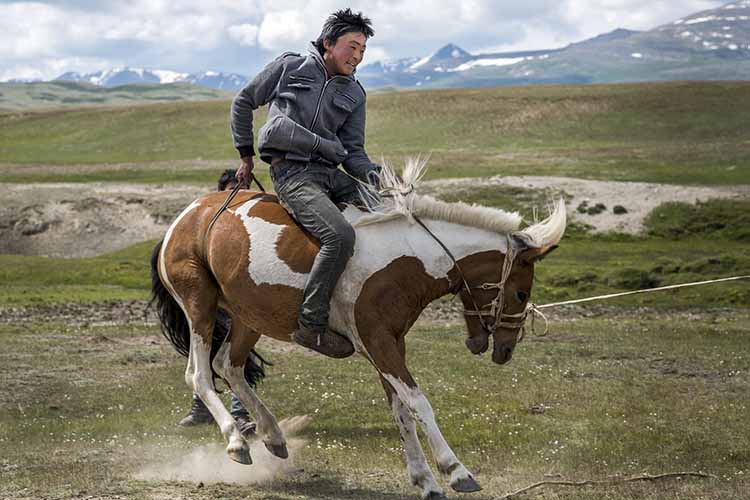
On one day each July, the men ride out and bring home around ten wild mares from around the valley to be added to the family's herd. This day is known as 'Breaking of the Mares Day', as the horses are trained to be ridden by the nomads, who start riding them without using saddles or modern equipment. The mares will become an integral part of the family, providing milk and transport for the nomads, who feed and care for them throughout the harsh Mongolian winters.
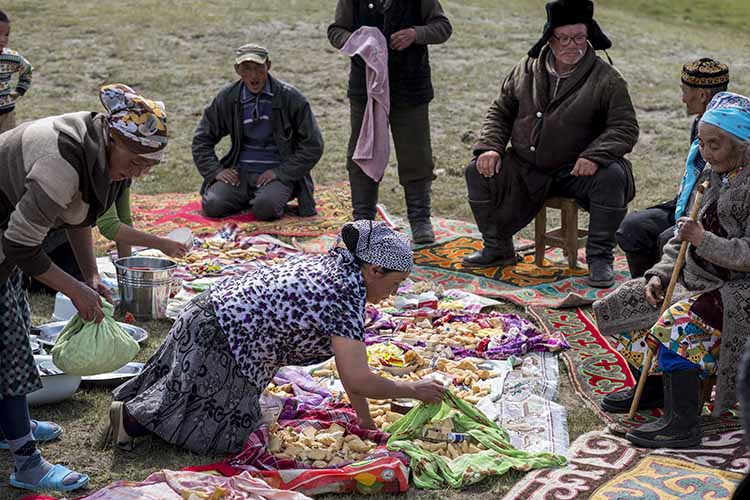
After Breaking of the Mares Day, a feast is held in the nomads' encampment. The feast consists of many traditional Kazakh foods, including pastries, mutton and horse meat, and ends with numerous toasts with shots of Mongolian vodka.